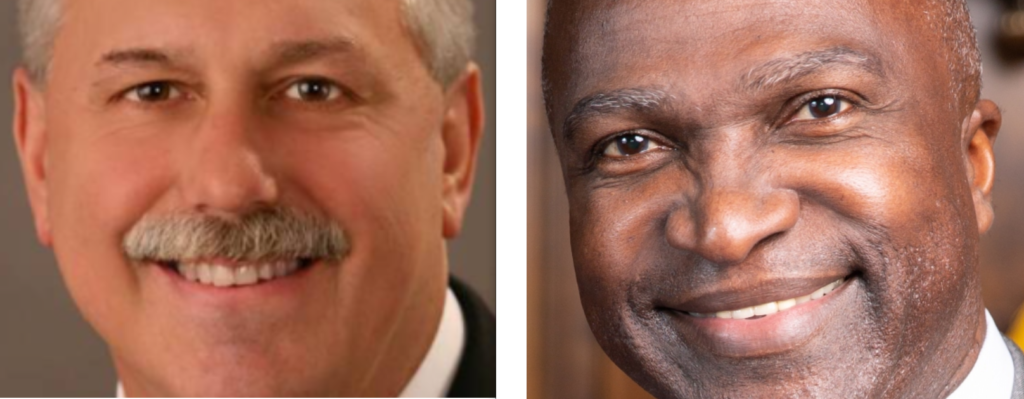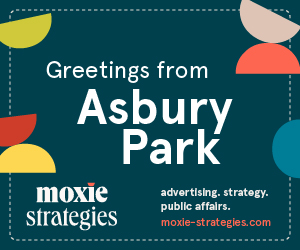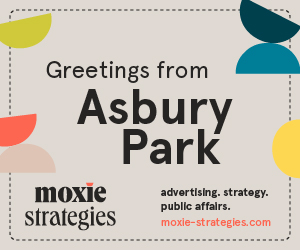Fixing America: the View from Edison and Plainfield

The debate over President Joe Biden’s infrastructure bill has been primarily centered around the personalities behind the White House’s $2 trillion plus plan and the GOP’s $568 billion counter proposal.
As a consequence, this beltway conversation is all about national horse race politics, whose ideas are polling best, who will compromise, and who will stand firmest.
The reporting is disconnected from the lived experience of the American people who in just the last year have been through a pandemic that killed over half a million people and an insurrection that for the first time in our history saw the peaceful transition of power at risk.
From 10,000 feet, it’s hard to know how to right size any program to effectively repair what’s broken in America, never mind how to prioritize what we need to fix first. How long that list is and how urgent the mission is, depends very much on where you are sitting.
WHAT’S THE HURRY?
If you are one of the households in a city like Flint, Michigan or Newark, New Jersey, where possible lead contamination of your drinking water has cast a cloud over kids’ future you probably want things to move with a certain sense of urgency.
In their annual report the American Society of Civil Engineers have given our nation’s infrastructure a C minus when they average in their assessment of our physical plant for basics like aviation, schools, ports, water supply, solid waste management, rail and road transport.
According to ASCE there are so many water main breaks daily 6 billion gallons of treated water is lost, the equivalent of 9,000 swimming pools. 43 percent of our roads “are in poor or mediocre condition, a number that has remained stagnant for several years,” according to the trade group for civil engineers.
Concurrent this once in a century mass death, we were forced to confront our racist past with the summary police execution of George Floyd in broad daylight in a mid-western city.
Throughout this past year it has been America’s mayors that have been drafted by destiny to address all of it in real time while so much of the national government was dysfunctional.
Insider NJ spoke with Edison Mayor Thomas Lankey and Plainfield Mayor Adrian Mapp for their take on how best Washington can make up for decades of disinvestment but also to offer their own definition of critical infrastructure.
THE FUTURE NOW
While Edison is in Middlesex and Plainfield is in Union, they are both majority minority communities that right now reflect the demographic reality that will be America by 2045.
According to the U.S. Census, one in five Plainfield households struggle to get by below the poverty line while 5.7 percent of Edison falls below that line. But the poverty level is only part of the story. Consider that in Union County, according to the United Way, 35 percent of families struggle week to week to cover the basics, compared to 32 percent in Middlesex.
For Mayor Adrian Mapp, in his second term leading the City of Plainfield, which was hit hard by COVID-19, addressing the lack of community based public health infrastructure has to be part of whatever the federal government does going forward.
For Plainfield, COVID revealed stresses and fractures in the healthcare system every bit, if not more lethal than a potential bridge collapse.
“Certainly, Plainfield is one of those communities where because of our diversity, our population mix, we do have lots of people that don’t have the level of healthcare they need in order to ward off many diseases because Black and Brown folks suffer from chronic diseases like diabetes, high blood pressure which causes heart problems,” he said during a phone interview.
Mapp said that 7,000 of his 52,000 residents had a bout with COVID and 172 lost their life to it. Even now, he said “we know our residents have not gotten the vaccine at the same rate as white communities, although I must applaud the effort of the county, working with the state and the city….to get the vaccine into the arms of our people.”
PAST CHOICES IN A NEW LIGHT
Mapp continued. “We had a hospital known as Muhlenberg that was in our community for over 150 years closed twelve years ago and that created a deficit in our community in terms of health care. Now, there’s an emergency care facility at that site….but our residents still have to go outside of the city to get the level of care they need and deserve. That should also be part of the infrastructure.”
In the aftermath of the George Floyd murder, Mapp appointed a police reform commission to do fact finding on what Plainfield could do to try and help its local police deconflict with the community they serve.
“They reviewed our policing policies and regulations and what came out of that study was that mental illness is a huge problem which the police are often called to address and leads to someone who is suffering a mental health episode—that person ends up dead,” he said. “So, we have got to refocus to provide a level of mental health care and intervention before it gets to the point where police officers are called to the scene.”
Both Lankey and Mapp believe there’s a federal funding role in helping their communities expand the definition of local public safety to one that includes community wellness as the nation tries to get beyond the pandemic.
“Being as diverse as we are, there’s a lot our officers need to understand and one of the things we have been trying to do is to diversify our [police] force to look like our community—we still have a way to go,” Lankey said.
As part of Edison’s reset on policing, Lankey’s launched a new initiative at the municipal level to address what he sees as a deepening addiction crisis made even worse over the arc of the pandemic. For now, the initiative is working out of the Mayor’s office. Lackey says it will most likely become incorporated into the local Health Department.
CUTS THAT HURT
Throughout the pandemic, it was local Health Departments that were on the frontlines of the state’s COVID-19 contact tracing program. Yet, in the years after the Great Recession, the Trust for American Health reports funding was cut significantly for the nation’s municipal public health agencies with more than 55,000 staff positions zeroed out between 2008 and 2017.
“While everything was shut down, we could take [Health Department] people that were doing inspections—restaurants were closed and you didn’t have to inspect them so you could reassign but now that things are opening back up those people have to go back to what they were doing,” Lankey said.
The Edison Mayor says maintaining his local Health Department’s ability to track and suppress COVID while resuming local inspections is an example of something that the federal government should help fund.
Edison’s municipal balance sheet is still under stress from the impact on commercial real estate from the Great Recession with property owners hammering his town with successful tax appeals even as he had to deal with “water mains breaking constantly—like two a week, especially in the winter.”
“We took a huge, huge hit with all of the tax appeals that occurred—you know the residential property came back but the commercial has not so a lot of times you have to bond for a lot of your tax refunds which increases your debt,” he said. “We’ve been paving more roads than in the history of Edison but it’s a big place and in eight years we have gotten half-way through the town.”
In 2019, when Edison voters rejected overwhelmingly a plan to have the global multinational Suez take over the town’s water and sewer system, town officials had to roll up their sleeves and actually start a municipal water utility.
For Lankey, the pandemic and the new demands it placed on Edison’s parks and recreation assets was also an eye opener.
“One of the things that kind of shocked me was our recreation fields and parks were also part of that crumbling infrastructure,” he said. “Our parks were built in the 60s and 70s and the world has changed as has our demographics. These parks are not only not up to standard, they are not properly purposed for what we need to have at this point in time.”
“Our infrastructure is just crumbling, and we have been addressing it as much as we can, but you can’t spend the money and then also maintain your tax base where it needs to be. It’s a double-edged sword,” he said.










Leave a Reply